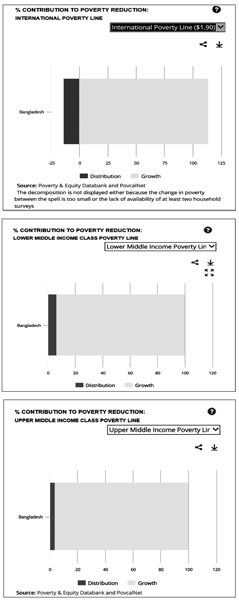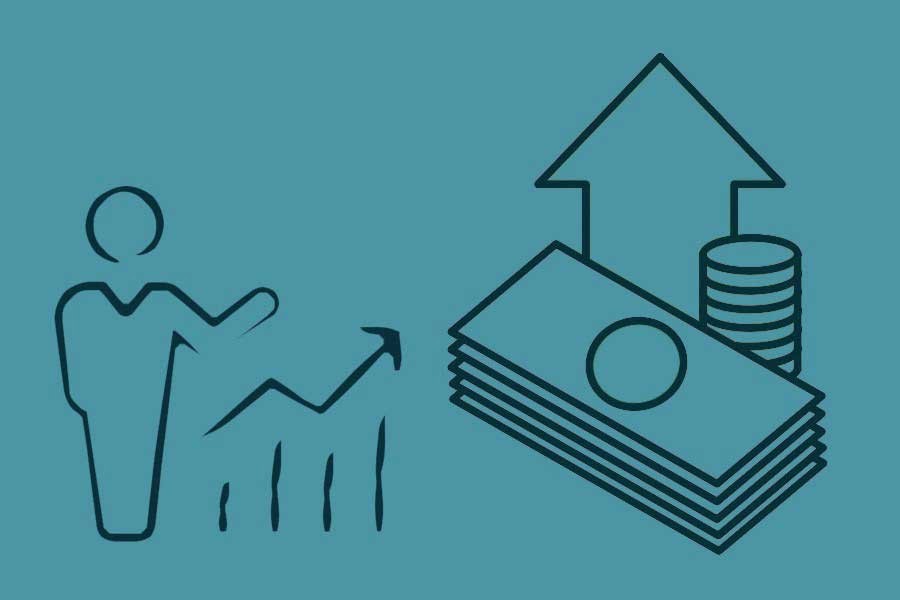From a war-torn nation in 1971, Bangladesh has turned itself into a 'Role Model for Development' in less than fifty years. The country recorded impressive progress in poverty reduction and numerous other parameters of socioeconomic development in the last few decades. The recent elevation of Bangladesh to the lower middle-income status and its more recent fulfillment of criteria for graduating from the least developed country (LDC) status bear testimony to this impressive progress. However, going forward, Bangladesh still has a number of issues that it needs to address to keep up the momentum and to become a high income country within the targeted timeframe. This article looks at some of the underlining factors which define the changing poverty map of Bangladesh while suggesting a few points which may be crucial for making its future growth more inclusive and sustainable.
What makes a country poor?
 To answer this question, we need to know what makes a country rich. If we look at the development story of Nordic countries and how they have transformed the society, we can figure out the same. With high taxation and high spending on health, education and employment generation these countries have given a model for development.
To answer this question, we need to know what makes a country rich. If we look at the development story of Nordic countries and how they have transformed the society, we can figure out the same. With high taxation and high spending on health, education and employment generation these countries have given a model for development.
There is a strong correlation between lack of education and poverty. If we map poverty with no education and primary education, difference is 11 per cent and with no education and secondary education, it is 17 per cent. In Bangladesh, 22 per cent of the poor people do not have tertiary/post-secondary education.
 Another important factor contributing to poverty is lack of basic health services. People are forced to spend more out of pocket for basic health services. It further leads them to a vicious circle of poverty. Studies indicate that poor people spend 182 per cent of the income, middle class 89 per cent and rich 61 per cent for health services.
Another important factor contributing to poverty is lack of basic health services. People are forced to spend more out of pocket for basic health services. It further leads them to a vicious circle of poverty. Studies indicate that poor people spend 182 per cent of the income, middle class 89 per cent and rich 61 per cent for health services.
Going with the facts, poor people spend 72 per cent of income, middle class 30 per cent and rich 19 per cent for housing. For transportation, the figures are 28 per cent, 17 per cent and 10 per cent respectively and for food the figures are 28 per cent, 12 per cent and 7.0 per cent respectively. The conclusion is, poor people are spending a high percentage of their income for basic things which makes them poorer.
Impact of distribution on Poverty Line
The traditional theory that distribution can reduce extreme poverty has been found to have a negligible effect in the case of Bangladesh. The related graph indicates distribution having a negative contribution to growth for extremely poor people. But there is a marginal effect in case of lower middle-income poverty line and upper middle-income poverty line. The conclusion is, extremely poor people fail to take the advantage of policies as a lot needs to be done to prevent leakage with a distribution system.
How Bangladesh fared in last decade?
The last decade saw Bangladesh making tremendous progress despite legacy challenges. As per World Bank report, Bangladesh has made a remarkable progress in reducing poverty with sustained economic growth. The country with a population of 165 million had the gross national income (GNI) per capita of USD 1470 in 2017. Based on the international poverty line of $1.90 per person per day, it reduced poverty from 44.2 per cent in 1991 to 13.8 per cent in 2016/17. Also, life expectancy, literacy rate and per capita food production increased significantly. According to official estimates, the country had a growth rate of 6.0 per cent over a decade and reached 7.3 per cent in 2016/2017. Rapid growth enabled Bangladesh to reach the lower middle-income country status in 2015. In 2018, Bangladesh fulfilled all three eligibility criteria for graduation from the UN's Least Developed Country (LDC) list for the first time and is on track for graduation in 2024.
How is the country's growth vis a vis other
low-income countries?

 The growth story of Bangladesh has been fantastic in comparisons to low income countries of the region. High the growth rate has impacted the poverty in a great way and offers a model for many African countries that are looking forward to growth and development to reduce extreme poverty.
The growth story of Bangladesh has been fantastic in comparisons to low income countries of the region. High the growth rate has impacted the poverty in a great way and offers a model for many African countries that are looking forward to growth and development to reduce extreme poverty.
Which factor has contributed most to the country's growth?
Readymade garment export has contributed most to the job creation and in the process has led to poverty reduction across the board. There is a strong link between the export and poverty reduction and same is visible from the related graph here. The gross domestic product (GDP) per capita during the period of 1995 to 2017 has increased three-fold. The European market has played a dominant role in garment export from Bangladesh.
What more needs to be done?
The reason for Bangladesh poverty is lack of health services, employment and education of a large population. Out of these, education has a more dominant role to play. Bangladesh is both an inspiration and a challenge for policymakers. While the income growth, human development and vulnerability reduction efforts till date have been extraordinary, the country faces a daunting challenge with about 22 million people still below the poverty line. The country is at an important juncture, when with the right policies and timely action, it can move up the middle-income bracket. The World Bank has identified job creation as the country's top development priority. Bangladesh needs to create more jobs for 2.0 million youths entering the job market every year. To do so, Bangladesh needs to improve upon affordability of power, transport infrastructure, challenging and complex business regulation and handling of natural disasters.
Financial inclusion and Bangladesh
Globally, about 1.7 billion adults remain unbanked-without an account at a financial institution or through a mobile money provider. In 2014 that number was 2.0 billion. As account ownership is nearly universal in  high-income economies, virtually all unbanked adults live in developing economies. Home to 225 million adults without an account, China has the world's largest unbanked population, followed by India (190 million), Pakistan (100 million), and Indonesia (95 million). Indeed, these four economies, together with three others- Nigeria, Mexico, and Bangladesh- are home to nearly half the world's unbanked population.
high-income economies, virtually all unbanked adults live in developing economies. Home to 225 million adults without an account, China has the world's largest unbanked population, followed by India (190 million), Pakistan (100 million), and Indonesia (95 million). Indeed, these four economies, together with three others- Nigeria, Mexico, and Bangladesh- are home to nearly half the world's unbanked population.
Financial inclusion for Women
The unbanked population in Bangladesh is predominantly women and this needs special emphasis on their education. The education coupled with financial literacy will change the poverty map of Bangladesh.
Future Roadmap
Bangladesh is a success story for poverty reduction. The growth story through garment export leading to job creation, coupled with financial inclusion has laid a roadmap for development. The continuous growth story of Bangladesh will ensure its transition from an LDC to a middle-income country (MIC) and further to an upper middle-income country (UMIC).
The country with political stability and a hard working population including the young offers a conducive ecosystem for future growth and a platform for drastic reduction in poverty. The story of Bangladesh offers a great opportunity for African countries to adopt this route through learning as part of South-South co-operation.
The author is studying at the Winston Churchill High School in Maryland, United States. She is also the President of the 'End Poverty Club' of the same school. This article is an abstract of a detailed research paper she produced on Bangladesh's poverty.


